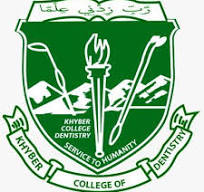CARDIACARRHYTHMIAS AND CONDUCTION DISTURBANCES PRESENTING TO ATERTIARY CARE CENTER
DOI:
https://doi.org/10.33279/jkcd.v8i3.547Keywords:
Arrhythmia, Heart block, ElectrophysiologyAbstract
Objectives:To determine the prevalence of cardiac arrhythmias and conduction disturbances presenting to the emergency room . at a tertiary care hospital
Materials & Methods:We investigated cardiac arrhythmias and conduction disturbances in 1096 patients presenting to emergency room Department of Cardiology Hayatabad Medical Complex from June 2017 to February 2018 with speciic cardiac conditions including supraventricular and ventricular arrhythmias, second-degree or higher atrioventricular (AV) block, intraventricular block, and sick sinus syndrome. The sampling technique was consecutive randomized. The data were analyzed using SPSS version 23.
Results:Out of total1096 patients, who presented to the emergency room 194(17.7%) were atrial ibrillation. Atrial lutter was present in 156 (14.2%). Narrow-QRS tachycardia was recorded in 380 (34%), and 98(8.9%) comprised ventricular arrhythmias. Bradyarrhythmias including AV block or sinus dysfunction was present in 268 (24.4%).
Conclusion:A significant number of patients seen in a cardiology emergency room who were seen for the first time presented with cardiac arrhythmia or conduction disturbance, and most of the patients were treated with radio frequency ablation. This implies that radio frequency ablation is an important modality of treatment in interventional cardiology.
Downloads
Published
How to Cite
Issue
Section
License
Copyright (c) 2018 Hameedullah, Imran khan, Malik Faisal Iftekhar, Zahoor Ahmed Khan, Zahid Aslam Awan

This work is licensed under a Creative Commons Attribution-NonCommercial-NoDerivatives 4.0 International License.
You are free to:
- Share — copy and redistribute the material in any medium or format
- Adapt — remix, transform, and build upon the material
- The licensor cannot revoke these freedoms as long as you follow the license terms.
Under the following terms:
- Attribution — You must give appropriate credit , provide a link to the license, and indicate if changes were made . You may do so in any reasonable manner, but not in any way that suggests the licensor endorses you or your use.
- NonCommercial — You may not use the material for commercial purposes .
- No additional restrictions — You may not apply legal terms or technological measures that legally restrict others from doing anything the license permits.









